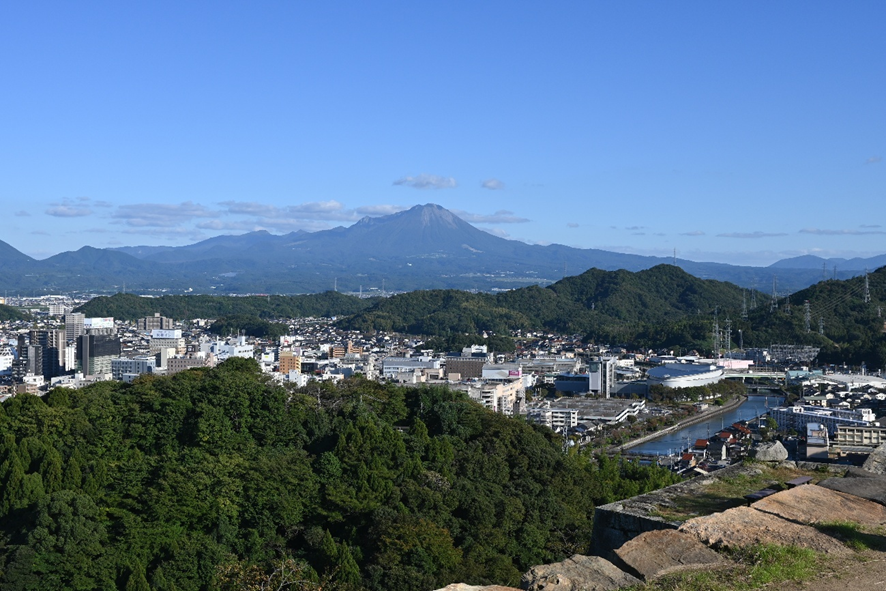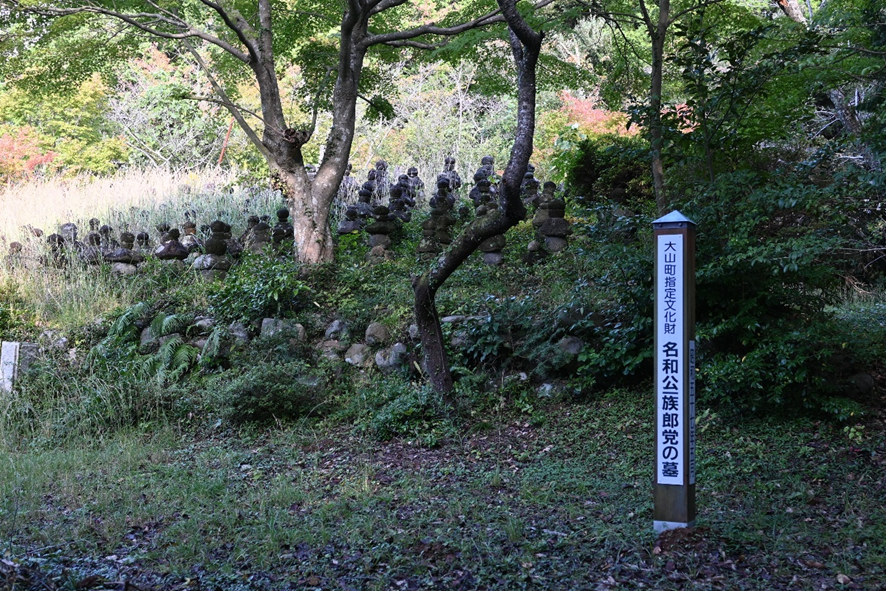Saihaku Travel Diary @ Yonago ~OCT,2025~
- 羽場 広樹

- Nov 1
- 7 min read

Mt. Daisen has been quiet since it last erupted over 20,000 years ago and is now classified as a dormant volcano. It is a famous mountain that can be seen from anywhere in western Tottori Prefecture, but the mountain's body has a complex shape due to collapses caused by eruptions and lava domes from underground, and it looks completely different depending on the angle from which you view it. Looking up from Masumizu Plateau, it looks like twin mountains.

From the top of Yonago Castle, it looks like a majestic cone-shaped volcano with a wide base, and the people of Yonago look up to this sight every day.

The golf course looked exactly like Mount Fuji. As with golf courses at the foot of Mount Fuji, the grass is steep, making it difficult to see the slope of the green, and the ball rolls at unintended speeds and in unintended directions. I had visited Ogamiyama Shrine and Daisenji Temple the day before, but perhaps my faith was not strong enough.

The western part of Tottori Prefecture is Hoki Province, the center of which is widely covered by the Daisen mountain range. The Izumo Fudoki, compiled during the Nara period, contains the Kunibiki myth, which says that the Shimane Peninsula was formed when a long, narrow island was pulled from Mt. Daisen and Mt. Sanbe in Shimane Prefecture. Yumigahama is said to be a remnant of the rope that was used at that time, but this famous sand spit was created by strong coastal currents, and at the time the Fudoki was written, the island was still not connected to the mainland.

Kotoura is a small fishing port located at the bottom of the Mt. Daisen mountain range jutting out into the Sea of Japan, where Emperor Godaigo was washed ashore 700 years ago after escaping from exile to Oki. The island is about 80km from here, so it must have been a risky escape. Looking at a map, it's easy to imagine that he rode the ocean current while heading towards the Shimane Peninsula and arrived here. The Tsushima Warm Current flows eastward at about 1-3 knots per hour (2-5km/h).

The local ruler was Nawa Nagatoshi. Loyal retainers of the Southern Court were called "Sanboku Isso," and he was one of them. The reason is that the readings of his surname, Yuki Chikamitsu, Kusunoki Masashige, and Chikusa Tadaaki, can be read as "Ki" and "Kusa," respectively. However, Nawa was counted as a member of the Ki group because he was appointed as the governor of Hoki by the emperor.

In the Meiji era, there was a movement to restore the honor of surviving retainers of the Southern Court, but Nawa Shrine was originally built on the site of the former Nawa clan residence when local volunteers built a shrine in the early Edo period, and later, Lord Ikeda Mitsunaka, the lord of Tottori Domain, constructed a shrine nearby. Nawa Nagato and his family are enshrined here, and Oki Island can be seen at the end of the sea as you approach the shrine.

The nearby Chokoji Temple was established as the family temple of the Nawa clan, and the gravestones of the Nawa clan are lined up on the mountain behind it. As the Southern Court found itself in a disadvantageous position, the Nawa clan migrated to Kyushu with the generations of their grandchildren, and maintained their territory in Higo until the Sengoku period. In the Edo period, they became vassals of the Tachibana clan of the Yanagawa domain, and in the Meiji period, they became priests at Nawa Shrine and were given the title of baron because they were "descendants of meritorious retainers of the Southern Court."

The San'in region, centered around Izumo, is the home of mythology and has been an open area since ancient times. Its abundance of Jomon, Yayoi, and Kofun ruins is truly dazzling. In addition to its geographical location, which allowed for the easy transportation of cultural artifacts from the peninsula via the Tsushima Current, it was also the birthplace of tatara ironmaking, and political stimuli, such as exchanges and tensions with Taniha (Tamba), Kibi, and the Yamato government, likely contributed to the creation of a large sphere of influence. While I wasn't able to travel to Kurayoshi, the capital of Hoki, I did visit the remains of a temple built during the Hakuho and Nara periods. Kotoura's Saio Ruined Temple, adjacent to the site of the Yatsuhashi County Office, is the only designated special historic site in the San'in region. The vast ruins, laid out in the style of the Horyuji Temple complex, are truly impressive.

There is also the Kamiyodo Temple Ruins in Yonago City (formerly Yodoe Town), which has been developed together with the nearby Mukaiyama Kofun Group. As the Yamato royal authority transitioned to the Ritsuryo system, provincial governors were dispatched from Kyoto, while local clan leaders were incorporated into the local governance system as kuni no miyatsuko (provincial governors) or gunji (district governors). In place of kofun, large temples may have been developed as a symbol of the ruler's authority.

The Mukaiyama Kofun Group consists of 17 ancient tombs lined up on a hill overlooking Mihonoseki and Yumigahama. Iwaya Kofun is a compact keyhole-shaped tomb measuring 52 meters in length, but before the war, a box-shaped stone coffin, iron swords, horse equipment, cylindrical haniwa clay figures, and figurative haniwa clay figures were excavated, and it is estimated to date to the late 6th century. Neighboring Izumo is home to the super ruins of Kojindani, where over 300 bronze swords were discovered 40 years ago, and Kamo Iwakura, where 39 bronze bells were discovered 30 years ago. While these ruins, with their adjacent tombs, provincial government offices, and ancient temples, offer a sense of continuity among local rulers, they are also fascinating in their own right.

Heading south from Yonago through the mountains, you enter Hino Town. One of the themes I wanted to explore during this trip was the footsteps of Hasebe Nobutsura. He was the founder of the Cho family, one of the Eight Kaga Families (senior retainers of the Kaga domain), and his descendants continued as lords of Anamizu in Noto Province from the Kamakura period through the Edo period. The Kaga domain was the daimyo with the largest kokudaka (rice yield) of any domain during the Edo period, with 12 families each having a kokudaka (rice yield) of over 10,000 koku. Of these, the Cho family was the second largest, with a fief of 33,000 koku, and was therefore awarded the title of baron after the Meiji Restoration.

The Hasebe family was a Takiguchi samurai family in Kyoto, but Nobutsura participated in Emperor Go-Shirakawa's uprising (1180) and was captured. He would have been killed, but Taira no Kiyomori took a liking to his character and exiled him to Hino, where a Shotoku monument stands in the middle of a field at the site of his mansion. He was well-liked by Minamoto no Yoritomo, and later served as land steward of Oya-sho in Noto Province, so he stayed in the area for around six years.

Choraku-ji Temple was rebuilt by Shintatsura, and has survived numerous wars and fires, with three Heian Buddha statues designated as Important Cultural Properties. Shintatsura was an outstanding feudal lord who promoted the development of Hino and incorporated Kyoto culture into his life during his short time there.

There is a shrine nearby that is strangely frequented by a lot of tourists. The "Kin" in "Kamochi" does not refer to gold, but rather to the fact that the iron sand that can be used to make high-quality steel was extracted there.

The Kamochi clan, based in this area, also participated in Emperor Godaigo's uprising, and fought alongside Nawa Nagato in the first battle against the Kamakura shogunate forces (at Mt. Funakami), leading Godaigo's army to victory.

The main attractions of the tour around Mt. Daisen are Daisen-ji Temple and Ogamiyama Shrine (Okumiya). Until the Meiji Restoration, the two temples were a single shrine due to the syncretism of Shinto and Buddhism, but the two entrances are split into two near the parking lot on the mountainside.

The stairs to Ogamiyama Shrine (Okumiya) are paved with neatly laid stones of different shapes, and the contrast between the deep trees and the sunlight filtering through the trees is very beautiful.

The enshrined deity is Oonamuchi-no-Kami, or Okuninushi-no-Mikoto, the same as at Izumo Taisha. Two weeks ago, I also had the opportunity to worship the same deity at Miwa Shrine in Nara. After a 15-minute hike up the mountain, I arrived at the main shrine, and all the buildings within the grounds are designated Important Cultural Properties and were well worth seeing. It is part of the route for climbing Mt. Daisen, so there are many climbers.

Daisen-ji Temple is located at a lower elevation than the shrine, but although the entrance splits into two, there is a connecting passageway along the approach, so you can enter the grounds of Daisen-ji Temple after praying at the shrine.

I climbed Yonago Castle. It was built by Kikkawa Hiroie, but after the Battle of Sekigahara, when the Mori clan was confined to the two provinces of Bungo and Choshu, Ieyasu assigned Nakamura Kazutada, who was in Sunpu, to the entire province of Hoki (180,000 koku) and made it his main castle. Hiroie was a military commander who deliberately stood by during the Battle of Sekigahara, keeping the Mori forces stationed and contributing to the Eastern Army's victory. He later received territory in Iwakuni and built Iwakuni Castle. Incidentally, Iwakuni Castle was also built on a mountain overlooking the Nishiki River. Perhaps he also liked high places. Mount Oyama is impressive, but in the opposite direction, you can see Yonago city at your feet, the Shimane Peninsula in the distance, Sakaiminato in the foreground, and the Sea of Japan and Nakanoumi sea between Yumigahama. The layout was magnificent. It has been designated as one of another Japan's 100 Greatest Castles.





Comments